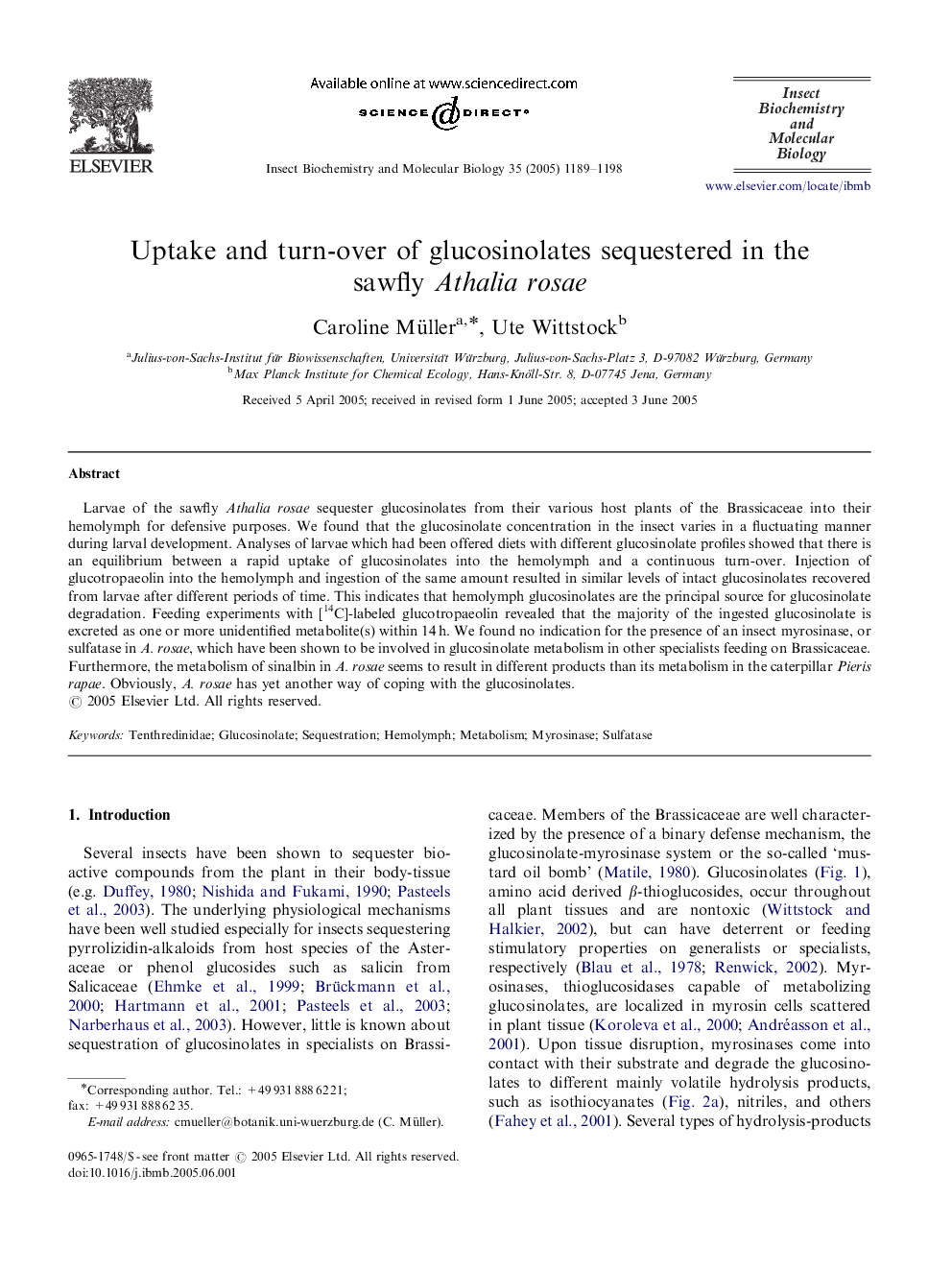| Article ID | Journal | Published Year | Pages | File Type |
|---|---|---|---|---|
| 10824378 | Insect Biochemistry and Molecular Biology | 2005 | 10 Pages |
Abstract
Larvae of the sawfly Athalia rosae sequester glucosinolates from their various host plants of the Brassicaceae into their hemolymph for defensive purposes. We found that the glucosinolate concentration in the insect varies in a fluctuating manner during larval development. Analyses of larvae which had been offered diets with different glucosinolate profiles showed that there is an equilibrium between a rapid uptake of glucosinolates into the hemolymph and a continuous turn-over. Injection of glucotropaeolin into the hemolymph and ingestion of the same amount resulted in similar levels of intact glucosinolates recovered from larvae after different periods of time. This indicates that hemolymph glucosinolates are the principal source for glucosinolate degradation. Feeding experiments with [14C]-labeled glucotropaeolin revealed that the majority of the ingested glucosinolate is excreted as one or more unidentified metabolite(s) within 14Â h. We found no indication for the presence of an insect myrosinase, or sulfatase in A. rosae, which have been shown to be involved in glucosinolate metabolism in other specialists feeding on Brassicaceae. Furthermore, the metabolism of sinalbin in A. rosae seems to result in different products than its metabolism in the caterpillar Pieris rapae. Obviously, A. rosae has yet another way of coping with the glucosinolates.
Related Topics
Life Sciences
Agricultural and Biological Sciences
Insect Science
Authors
Caroline Müller, Ute Wittstock,
